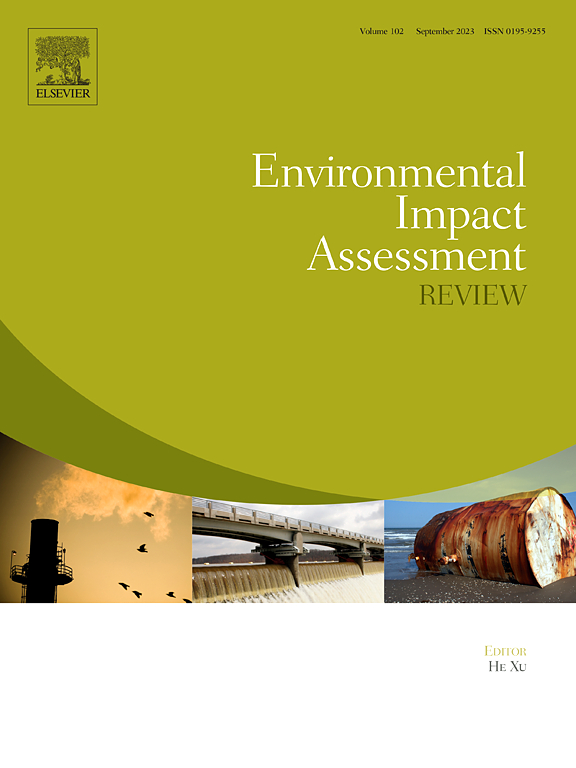District-county-level assessment of greenhouse gases emissions in China: Multi-faceted characterization and policy implications
IF 9.8
1区 社会学
Q1 ENVIRONMENTAL STUDIES
引用次数: 0
Abstract
Greenhouse gas (GHG) inventories serve as the data foundation for climate change mitigation; however, large-scale inventories primarily rely on macro-level energy consumption data, possessing limited spatial resolution and GHG type, and the top-down allocation of emissions introduces further uncertainty. To provide a comprehensive analysis of anthropogenic GHGs emissions in China, we established a district-county-level emission database for 2021, encompassing CO2, CH4, N2O, CF4, C2F6, and HFC-23, utilizing the bottom-up approach that integrates extensive point source data. Emission characteristics were analyzed through energy and emission flows, spatial distribution, industrial contributions, and emission intensity. Total GHGs emissions were calculated at 13.92 Gt CO2eq, with CO2 comprising 85.84 %, followed by CH4 at 9.22 % and N2O at 3.12 %. The analysis revealed that energy activity contributed 80.91 % of total GHGs emissions, with coal consumption alone responsible for approximately half of CO₂ emissions. Spatially, higher emissions were observed in districts and counties in the northern regions and the eastern and southern coastal areas. GHGs emissions from 42 major industries totaled 10.88 Gt CO2eq, with the top seven industries representing over 95 %. The national average GHGs emission intensity and industrial one was 121.74 and 292.05 Kt CO2eq/billion CNY, respectively. Notably, economic growth in North China and Northwest is more reliant on high‑carbon industries. Furthermore, regional disparities in industrial structure, energy mix, and economic development contribute to varying emphases among provinces in mitigating emissions per unit of energy consumption.

中国区县温室气体排放评估:多层面特征及其政策意义
温室气体(GHG)清单是减缓气候变化的数据基础;然而,大规模清单主要依赖于宏观层面的能源消耗数据,其空间分辨率和温室气体类型有限,自上而下的排放分配带来了进一步的不确定性。为了全面分析中国的人为温室气体排放,我们采用自下而上的方法,整合了大量的点源数据,建立了2021年的区县排放数据库,包括CO2、CH4、N2O、CF4、C2F6和HFC-23。从能量和排放流、空间分布、工业贡献和排放强度等方面分析了排放特征。温室气体总排放量为13.92 Gt CO2eq,其中CO2占85.84%,CH4占9.22%,N2O占3.12%。分析显示,能源活动占温室气体排放总量的80.91%,仅煤炭消费就占二氧化碳排放量的一半左右。从空间上看,北部地区和东部、南部沿海地区的区县排放较高。42个主要行业的温室气体排放总量为1088亿吨二氧化碳当量,其中排名前7位的行业占95%以上。全国平均温室气体排放强度为121.74 Kt CO2eq/billion CNY,工业排放强度为2920.5 Kt CO2eq/billion CNY。值得注意的是,华北和西北地区的经济增长对高碳产业的依赖程度更高。此外,产业结构、能源结构和经济发展的区域差异导致各省对单位能源消费减排的重视程度不同。
本文章由计算机程序翻译,如有差异,请以英文原文为准。
求助全文
约1分钟内获得全文
求助全文
来源期刊

Environmental Impact Assessment Review
ENVIRONMENTAL STUDIES-
CiteScore
12.60
自引率
10.10%
发文量
200
审稿时长
33 days
期刊介绍:
Environmental Impact Assessment Review is an interdisciplinary journal that serves a global audience of practitioners, policymakers, and academics involved in assessing the environmental impact of policies, projects, processes, and products. The journal focuses on innovative theory and practice in environmental impact assessment (EIA). Papers are expected to present innovative ideas, be topical, and coherent. The journal emphasizes concepts, methods, techniques, approaches, and systems related to EIA theory and practice.
 求助内容:
求助内容: 应助结果提醒方式:
应助结果提醒方式:


